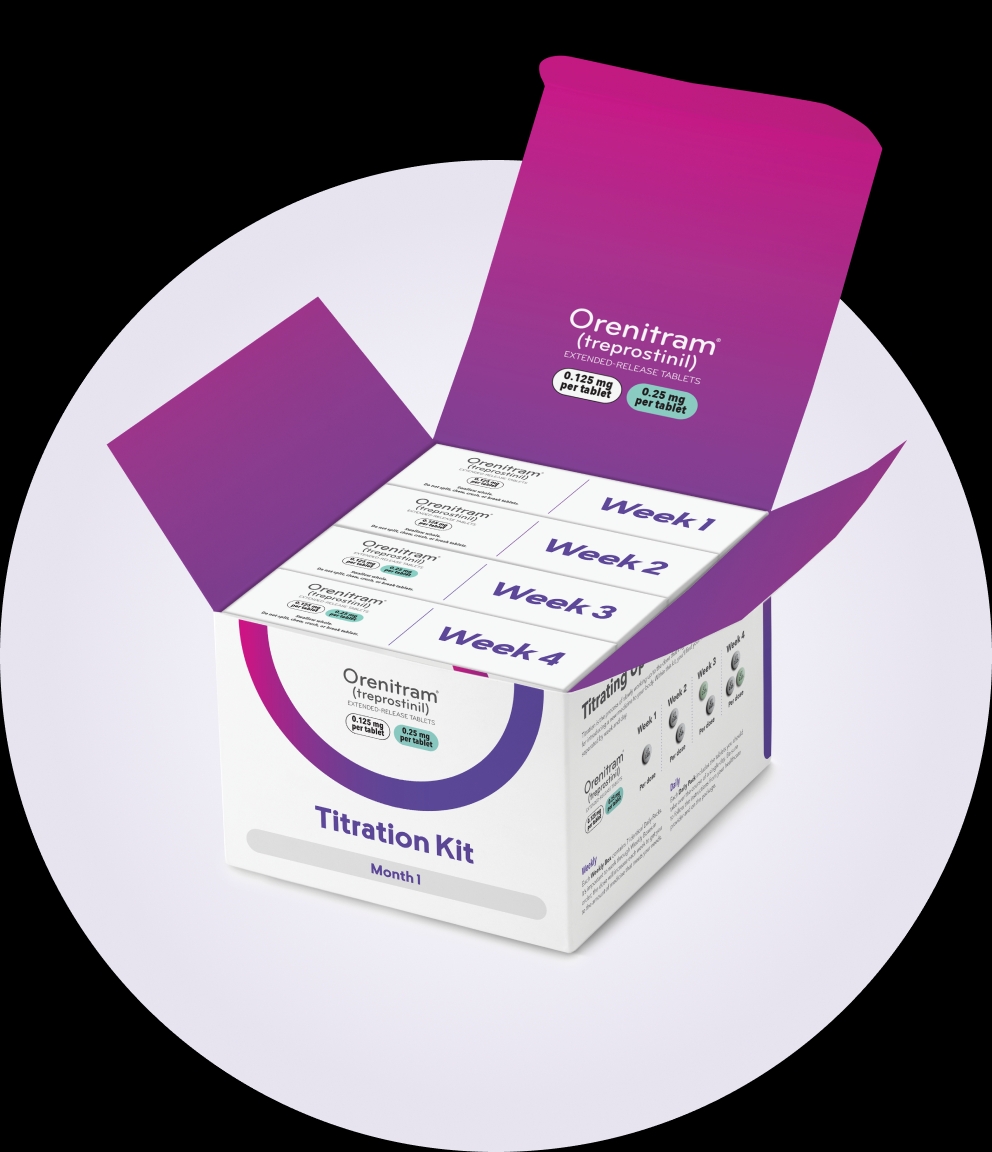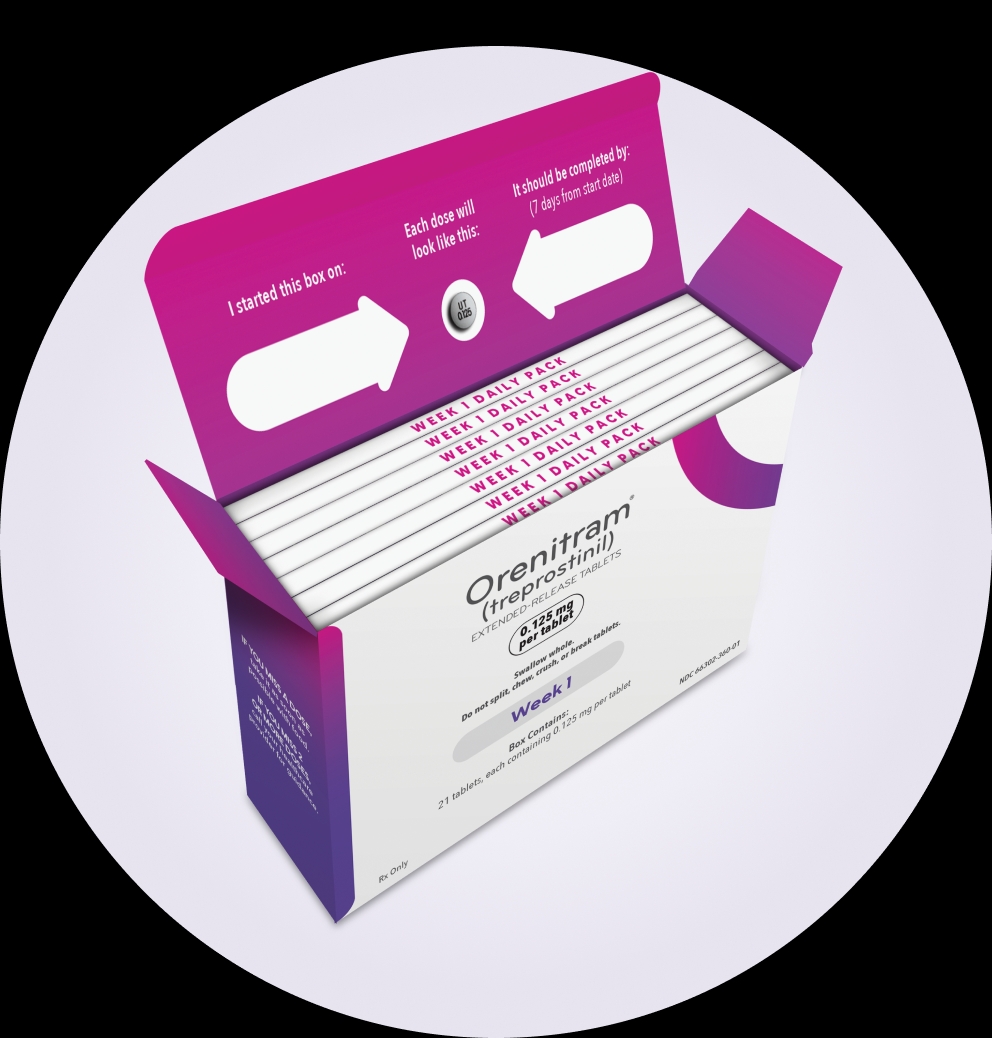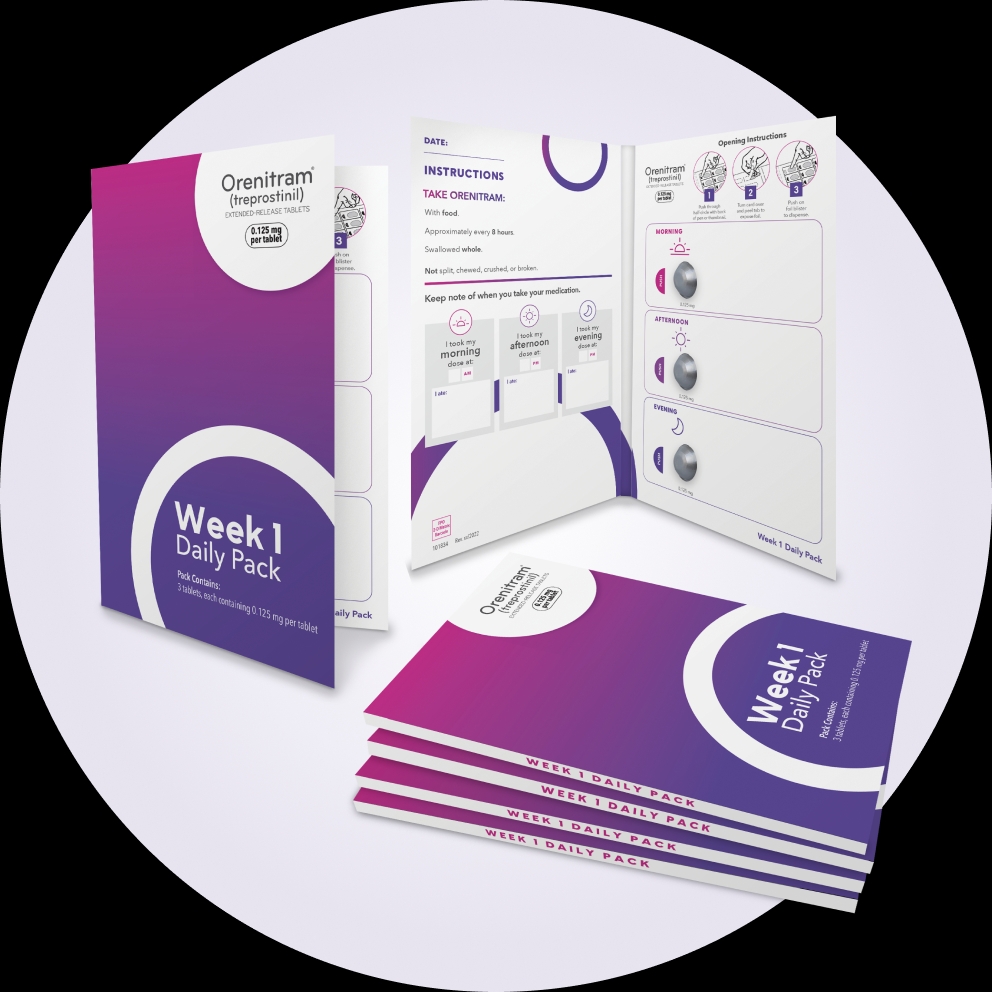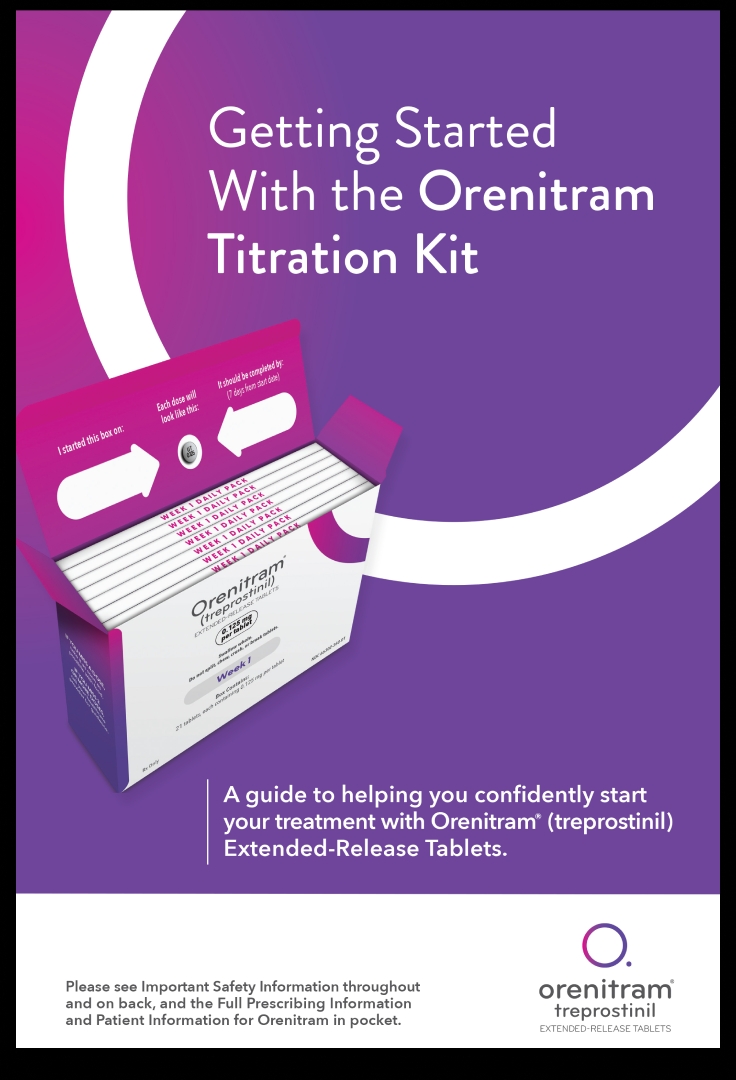Titration Kit Designed for a simple, confident start
Why is titration important?
Titration is all about finding the most effective dose for you,* also known as your "target dose." That's why it's important to stay committed to your treatment. You may not get the most benefit from Orenitram until you reach your target dose and will likely experience side effects during this time. The Orenitram Titration Kit is designed to make the process simple.†
The Orenitram Titration Kit
ALL-IN-ONE KIT to help simplify the first 3 months of taking Orenitram and put you on the path toward reaching your target dose
ORGANIZED DOSES so you know your exact dose every morning, afternoon, and evening


3 monthly kits
Each monthly kit includes:
- Support based on where you are during titration
- A simple outline of that month's Orenitram doses


4 weekly boxes per month
Each Weekly Box includes:
- How to take Orenitram
- What to do if you miss a dose


7 daily packs per week
Each Daily Pack includes:
- Your exact morning, afternoon, and evening doses of Orenitram
- Tools to help ensure you're staying on track
*The maximum daily dose for Orenitram is 120 mg.
†Patients new to treatment who are starting Orenitram on a 3-a-day dosing schedule are eligible for the Titration Kit.

Resources
Download the Orenitram Titration Kit guide
Read more about the Orenitram Titration Kit.
Download NowFrequently Asked Questions
Titration is the process of slowly increasing your dose of Orenitram over time until you find the most effective dose for you. You will likely experience side effects during this time. The maximum daily dose is 120 mg.
Starting a new treatment can be challenging, but the Titration Kit is designed to make treatment with Orenitram simpler. Instead of receiving your medication in bottles, your first 3 months of Orenitram will be organized each day in packs.
The Titration Kit contains helpful information about dosing, simple instructions, and reminders to know your exact morning, afternoon, and evening doses of Orenitram.
If you've started on Orenitram and you miss a dose, take the dose as soon as possible with food. If you miss 2 or more doses, call your healthcare provider for guidance.
Is your doctor considering moving you from a pump to pill?
Learn about transitioning to Orenitram





